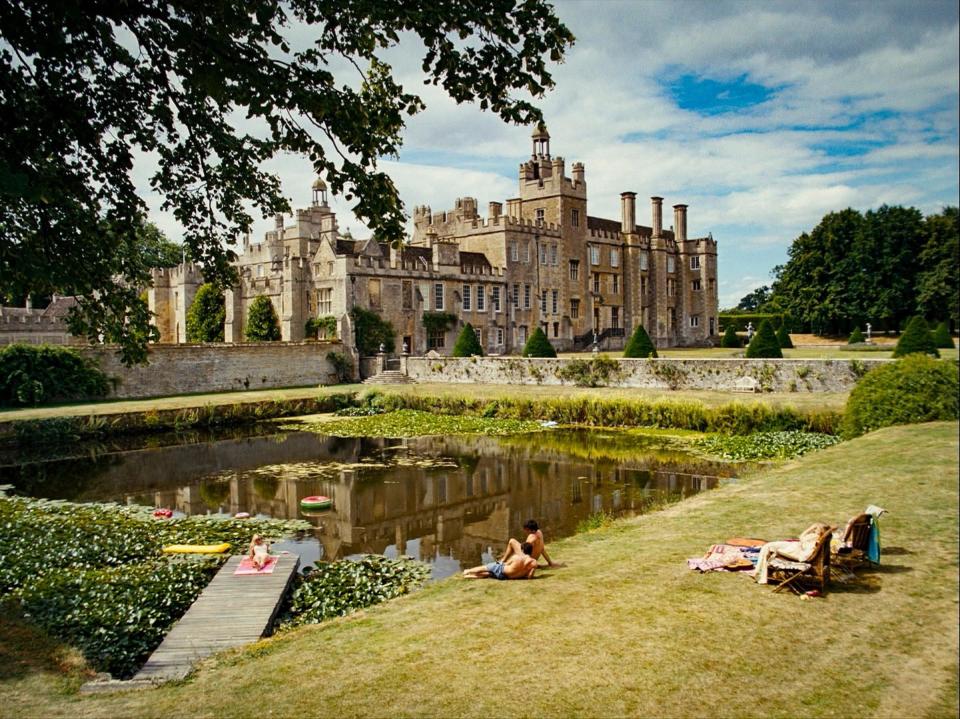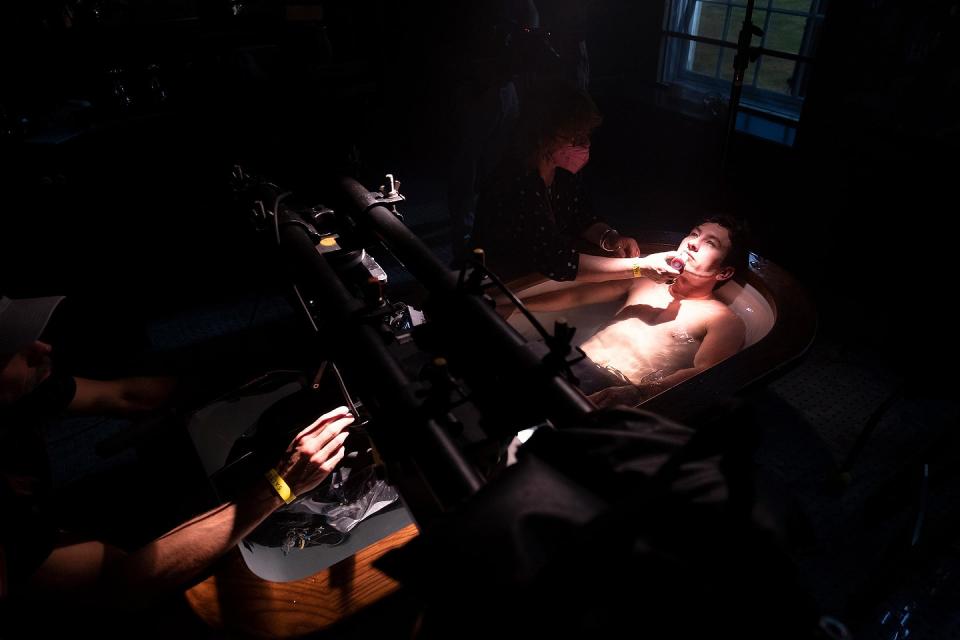‘I Wonder How Many People Are Going to Buy This?’ Inside the Sensual, Stylized ‘Saltburn’ Cinematography

- Oops!Something went wrong.Please try again later.
- Oops!Something went wrong.Please try again later.
- Oops!Something went wrong.Please try again later.
- Oops!Something went wrong.Please try again later.
[Editor’s note: The following interview contains spoilers.]
“Saltburn,” Emerald Fennell’s savage depiction of the British upper class in the mid-2000s, is a cross between “Brideshead Revisited” and “The Talented Mr. Ripley,” only told as a vampire black comedy. It revels in voyeuristic repulsion and the fetishization of beauty through the POV of cunning Oxford student Oliver (Barry Keoghan), who becomes infatuated with his aristocratic schoolmate, Felix (Jacob Elordi), who invites him to stay the summer with his eccentric Catton family at their titular estate.
More from IndieWire
'The Creator' Gets Another Lease on Life: It's the Top New Release Available on VOD
'Superman: Legacy': Nicholas Hoult Lands Lex Luthor Role - Report
Fennell had bold visual plans that began with shooting in 35mm to capitalize on the rich color and contrast, and using the 1.33 aspect ratio to enhance the voyeurism. She wanted to convey the hot summer and foggy night, influenced by the legendary landscape painter Gainsborough, as well as more dramatic lighting inspired by Hitchcock, “Nosferatu,” and baroque painters Caravaggio and Gentileschi.
Fortunately, the director was introduced to Oscar-winning cinematographer Linus Sandgren (“La La Land”) through “Saltburn” producer Margot Robbie, who had just worked with Sandgren on “Babylon,” and knew first-hand what dark beauty he could achieve shooting in 35mm.
“I had seen Emerald’s bold [debut film, ‘Promising Young Woman’], where she made some very interesting decisions,” Sandgren told IndieWire. “For example, letting the lady die in a single take, which was horrible to watch. And then when I got the [‘Saltburn’] script, I thought it was brilliant. She writes very visually and in a descriptive way and I got some very clear images in my head.”

In addition to a memorable naked dance at the film’s end (more on that below), there was the scene where Oliver observes Felix masturbating in the bathtub and then licks the draining water after he’s gone. “It’s like he’s making love to the drain,” Sandgren continued. “We wanted to stylize the bathroom in a way that felt like someone could have a spotlight on Felix and wanted him illuminated so the sweat was shining, and sort of a warm and hard light made sense to make him look sexy and alluring. And also Oliver, as he was watching him, got this bounce in his face from Felix’s body.”
Another descriptive moment in the script that translated chillingly to the screen was Oliver licking the menstrual blood of Felix’s sister, Venetia (Alison Oliver), and then kissing her. This embodied the vampire ethos at night in all its gothic beauty and ugliness. “Emerald’s attracted to something gross happening, but you see it in a perfectly composed image with the light just hitting perfectly,” added Sandgren. “I think the challenge was finding a language for the film with secrets that you don’t want to reveal and having it seem ambiguous.”
The idea was to make a vampire story in the real world, where Oliver wants to suck the life out of this privileged upper class and become king of the castle. But it had to be done in a stylized, absurdly comical manner. Sandgren shot on 35mm Kodak film with the Panaflex XL2 camera and Primo prime lenses to get colors and contrast with under-corrected spherical aberration.

The cinematographer likened the voyeurism to observing the characters in a doll house. Drayton House in Northamptonshire, England, played the role of the titular 14th-century estate, with its 17th-century spiral cantilever oak staircase, commanding dining room, and historic furniture and oil paintings. However, the crew was restricted in how they could move about, and the art department needed to construct sets for Felix and Oliver’s bedrooms and bathroom. In addition, the protection of the home and furnishings, as well as the environmental impact of their presence, were key concerns, so they used LED lighting instruments wherever possible.
“We composed and blocked many scenes like the family at Saltburn estate had been portrayed for centuries in the oil paintings on their walls, and other times we shot close-ups of skin, eyes, sweat, as well as of events in the film where we did not want the audience to look away,” said Sandgren.
Sandgren luxuriated in painterly shot opportunities as though they were conceived in Oliver’s mind. There were other moments composed with hard, directional, front-light on faces or framed as mid-shots. When Oliver receives his birthday cake on the staircase, the entire entryway was blanketed in a devilish, blood red with actual candles on the cake to illuminate his face.

By contrast, there were shots composed with barely any light at all, such as Oliver making ghoulish love in a cemetery that leaned into misty Gainsborough.
But there were also two memorable long takes through Saltburn that serve as bookends: Oliver’s tour of the main hall, which seduces him like a kid in a candy store, and his joyous, naked dance at the end (to Sophie Ellis-Bextor’s “Murder On The Dancefloor”), which basically retraces the same route. It’s a tour de force for Keoghan, who, according to the cinematographer, was fearless throughout, but worked especially hard at rehearsing and shooting the choreographed dance sequence.
“As he enters that room, at the very end, it’s a very dramatic, theatrical lighting with a lot of atmosphere and shafts of light,” Sandgren said. “And he’s like on a stage, giving a performance. I remember when we shot that, we felt like, ‘Wow, I wonder how many people are going to buy this?’ I mean, it’s all new, and his dick is hanging around, and it’s like insane. We did it many times: ways more emotional, less emotional, to get the timings right; sometimes the camera was too far away, sometimes we got wobble on the camera. But I feel like when you see the movie, it’s not like anything else.”
Best of IndieWire
Where to Watch This Week's New Movies, from 'The Hunger Games' and 'Saltburn' to 'May December'
The Best Thrillers Streaming on Netflix in November, from 'Fair Play' to 'Emily the Criminal'
Sofia Coppola Movies, Ranked: 'Priscilla,' 'The Virgin Suicides,' 'Marie Antoinette,' and More
Sign up for Indiewire's Newsletter. For the latest news, follow us on Facebook, Twitter, and Instagram.

